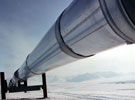

Honeywell’s technology has transformed corrosion into a process variable that can be monitored in realtime.
Corrosion has never been a true process value because, up till now, the only way to measure it was reactively. Engineers know that with the process conditions, past experience and some calculations they can predict the life span of an asset. True, if you ‘assume’ that corrosion is a linear process – an assumption to which the following disasters have been attributed:
* Hydrocarbon oxidation plant explosion – the largest peacetime explosion in the UK resulted from corrosion of a bypass line into a train of six cyclohexane oxidation reactors. Result: loss of life and total destruction of the plant.
* Gas transmission pipeline ruptures – over the past decade, there have been three major pipeline explosions involving internal corrosion. These have involved reportedly dehydrated gas transmission-lines, a hydrocarbon products pipeline in the US and a sour gas pipeline in Canada. Results: loss of life, major production loss and environmental impact.
* Sulphuric acid tank explosion – corrosion damage in a tank roof and shell caused leakage and ignition of flammable vapours. Result: a significant volume of sulphuric acid was released to the environment.
* Refinery sour water corrosion incidents – over the last decade, several major incidents of ammonium bisulphide corrosion caused loss of containment in hydro-processing units. Result: explosion, damage and lost production.
(Ref. Honeywell SRG-13/09/07)
Corrosion becomes a process variable
What happens when the process changes? Who knows? Conventional methods of corrosion measurement make use of a coupon, which is usually a credit card-sized specimen manufactured from the same material as the asset (Figure 1). The coupon is fitted to the asset and left for a period of time, typically 2-6 months, after which it is removed and analysed offline in a laboratory.

This implies long delays between a process event and a corrosion measurement with NO method to correlate the corrosion rate to process variables.
But, things have changed, and Honeywell is now able to offer an in-sight to what is happening inside an asset on-line and in realtime. The Honeywell SmartCET multivariable transmitter (Figure 2) will detect general and localised corrosion (pitting) in realtime connecting to a DCS or process knowledge system via a 4-20 mA signal and compatible HART protocol. Voila!

In addition to monitoring general and local corrosion parameters, the same instrument also gives the Stern-Geary constant and a fourth variable which assists in diagnosing the corrosion mechanism. The corrosion variables are generated using linear polarisation resistance (LPR), harmonic distortion analysis (HAD) end electrochemical noise (ECN) techniques.
Corrosion better recognised
“The most common types of corrosion include caustic and chloride cracking, oxidation, corrosion under thermal insulation and ammonia or hydrogen-induced cracking. Primary causes of contamination in pharmaceutical manufacturing include corrosion of embedded iron particles in vessel walls, failures of glass linings and corrosion under installation. The most important raw material for the hydrocarbon processing industry is crude oil, which often contains a fraction of water. Corrosive species that can be present in the oil/water mixture include sulphur compounds, chlorides, ammonia, sulphuric acid, hydrochloric acid, carbonic acid, phosphoric acid and cyanides,” as per corrosioncost.com.
Through realtime monitoring, it has been discovered that most corrosion damage occurs during relatively short periods of time, usually during process start-up, changes, upsets or shut-down. With this new knowledge, after implementing SmartCET, customers have modified their operational methods to limit the effects of corrosion and, in some cases, have changed the plant process streams.
For more information contact Paulo da Silva, Honeywell Southern Africa, +27 (0)11 695 6031, [email protected], www.honeywell.co.za

© Technews Publishing (Pty) Ltd | All Rights Reserved